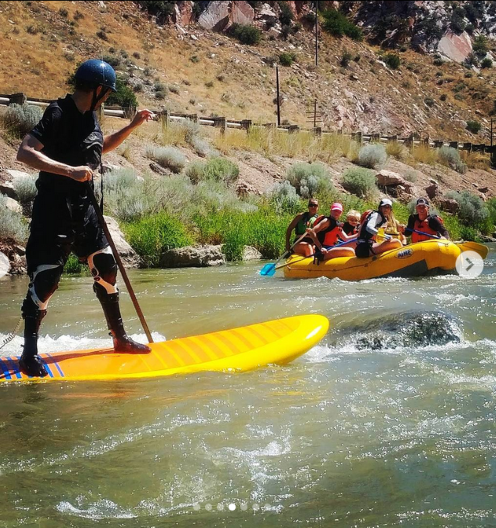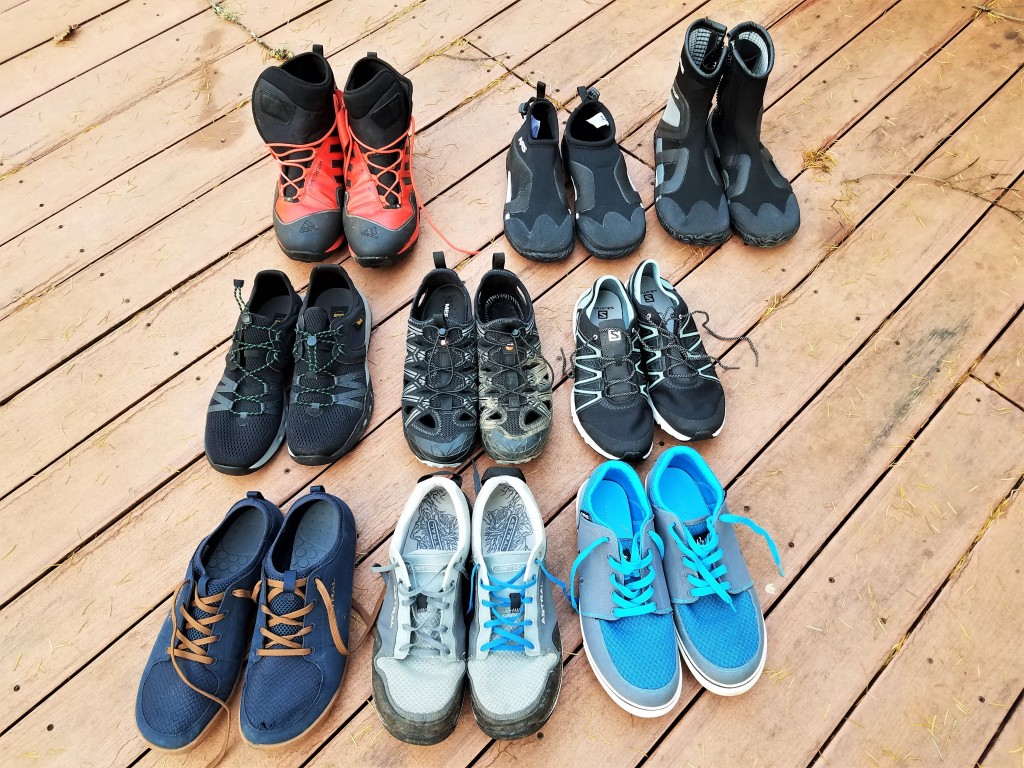
Footwear for Stand Up Paddle Boards
Footwear matters on SUPs. See when to go barefoot and when to choose water shoes, neoprene booties, or amphibious sneakers. Learn fit, traction, drainage, and care tips so you stay comfortable, protected, and in control on any water.
The right footwear improves grip, protection, and comfort on SUPs.
Learn when to go barefoot versus water shoes or neoprene booties, how to match gear to conditions, and care tips for long life.
Table of contents
Stand up paddle boarding (SUP) spans quiet lakes to open coastlines—and the right footwear can make all the difference. While many beginners start barefoot, longer distances, rocky launches, cooler water, and varied terrain quickly highlight the benefits of purpose-built footwear. Use this guide to choose what to wear under different conditions so you stay comfortable, confident, and safe on your solid or inflatable board.

Why Footwear on Stand Up Paddleboards Matters
Your feet are your contact point with the board. The right footwear:
-
Improves grip on wet deck pads (especially on inflatables)
-
Boosts comfort and reduces foot fatigue on long days
-
Adds protection from sharp rocks, oyster shells, hot sand/dock surfaces
-
Helps stability & control during step-back turns, surf, and rough water
Common Options (When and Why to Use Them)
Barefoot
-
Best for: SUP yoga, short warm-water sessions, glassy lakes, fishing platforms with plush deck pads
-
Pros: Max feel and feedback, great for balance training
-
Watchouts: Hot decks, sharp substrates, limited protection on rocky entries
Water Shoes (Low-Profile Aqua Shoes)
-
Best for: Everyday paddling, warm water, mixed launches (sand/rock), touring on inflatables
-
Pros: Good deck grip, drain fast, protect from shells/rocks, pack small
-
Watchouts: Cheap models can feel sloppy; prioritize fit and outsole traction
Neoprene Surf Booties (3–7 mm)
-
Best for: Cold water, shoulder seasons, early mornings, alpine lakes
-
Pros: Warmth + traction; split-toe models increase control and feel
-
Watchouts: Too thick can reduce board feel; match thickness to temps (see below)
Amphibious Sneakers / Hybrid Trail-Water Shoes
-
Best for: Portages, mixed river/lake trips, rocky or long approaches
-
Pros: Supportive, rugged outsole, toe protection, drain ports; great for multi-day trips
-
Watchouts: Heavier when wet; choose true amphibious designs that shed water
Sandals (Secure, Heel-Strap Models)
-
Best for: Hot climates, mellow flatwater, camp/shore use on multi-day trips
-
Pros: Breathable, quick-dry, easy on/off
-
Watchouts: Less deck feel; avoid loose or bulky straps in moving water
-

Fit, Features, and Materials: What to Look For
-
Traction: Sticky rubber with fine siping for wet grip on EVA deck pads
-
Drainage/Breathability: Mesh uppers + ports so water exits fast; reduce slosh
-
Support & Flex: Enough flex for board feel; enough structure for long paddles/approaches
-
Toe Protection: Reinforced toe bumper for rocky entries
-
Closure: Quick-lace, hook-and-loop, or strap systems that won’t snag; snug heel hold
-
Neoprene Thickness Guide:
-
1–2 mm: warm water splash protection
-
3 mm: cool water shoulder seasons
-
5–7 mm: cold water or prolonged immersion
-
-
Sizing: Snug-but-comfortable; too loose = blisters/slip; too tight = cold feet from restricted blood flow
Match Footwear to Your Paddling
Inflatable Boards (iSUPs)
-
Slightly softer underfoot; grippy deck pads
-
Footwear priorities: traction + drainage for wet decks and repeated remounts
Touring & Long Distance
-
Foot fatigue builds—choose supportive water shoes or amphibious sneakers
-
Add thin neoprene socks for chafe/temperature management
Rivers / Shallow, Rocky Launches
-
Prioritize toe protection and a secure fit
-
In moving water, avoid loose ankle leashes and snag-prone straps; use quick-release waist leashes
Cold Water / Shoulder Seasons
-
3–5 mm booties with textured outsole; add wool or neoprene socks if needed
-
Rinse and dry fully to prevent odor/mildew
Care, Cleaning, and Odor Control
-
Rinse after every session, especially salt, silt, and algae
-
Open and air-dry fully; don’t bake in direct sun or car heat
-
Use mild soap or specialty wash; avoid harsh chemicals that degrade rubber/adhesives
-
Sprinkle baking soda or use odor-absorbing inserts between sessions
-
Inspect seams/outsoles; replace if grip is worn or the shoe feels sloppy on deck
Quick Picks by Scenario (No Brands—Just Specs)
-
Warm lake laps: Low-profile water shoes with siped outsole
-
Cold alpine lake dawns: 3 mm split-toe booties
-
Rocky river put-ins/portage: Amphibious sneaker with toe cap + drain ports
-
SUP yoga/fishing: Barefoot or thin grip socks (warm water)
-
Long tours on inflatables: Supportive water shoe + thin neoprene sock for comfort

Final Thoughts
There’s no single “right” choice of footwear for stand up paddleboards. Your footwear should match your water temps, launch terrain, distance, and board type. Barefoot can feel brilliant for short, warm sessions, but most paddlers appreciate the protection, grip, and endurance that good water shoes, booties, or amphibious sneakers provide—especially on inflatable boards and longer days. Choose a snug, draining, grippy option and your feet (and balance) will thank you.
FAQs
Should I wear shoes on a paddle board?
Not required, but recommended for rocky entries, long days, cold water, or shallow rivers where protection and grip matter.
Are shoes slippery on an inflatable deck pad?
Good water shoes are less slippery than wet skin. Look for siped rubber outsoles designed for wet traction.
What thickness booties do I need?
1–2 mm for warm water; 3 mm for cool shoulder seasons; 5–7 mm for cold water or prolonged immersion.
Won’t shoes reduce my board feel?
Barefoot has the most feel, but modern low-profile water shoes or split-toe booties strike an excellent balance of feedback + protection.
Can I use regular running shoes?
Not ideal. They hold water, get heavy, and lack wet-deck traction. Use amphibious designs with drainage and sticky rubber.
How do I prevent odor?
Rinse, air-dry fully, use mild cleaners, and store out of heat. Odor-absorbing inserts help between sessions.





